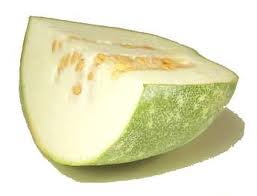 Print
Print
Shadrasa - the Six Tastes
Rasa is the perception of taste by the tongue. We can perceive the taste of a something when it meets our tongue.
Every substance has a different physical and chemical composition; hence, there are so many different tastes present in the universe.
Ayurveda explains that different tastes are created by different combinations of the pancha mahabhutas (elements). Jala (water) and prithvi (earth) play a major role in the formation of rasa, and the other three mahabhutas (fire, air and space) help.
Charaka, one of the founding practitioners of ayurveda, also known as the father of anatomy said that there are six rasas:
Madhura - Sweet:
Helps to build body tissue, and is beneficial for the senses and the hair, and for those who suffer from low body weight or excessive weight loss. Madhura rasa helps to keep good tone and pitch in the voice, and extends our lifespan. If taken in excess, the person suffers from meda (fat) and kapha dosha diseases.
Amla - Sour:
Helps in digestion and increases the appetite. Amla increases taste and causes light secretions. If taken in excess, kapha and pitta dosha and rakta dhatu diseases occur, and one can suffer from vertigo, loss of sensory functions and tissue loss.
Lavana - Salt:
Relieves rigidity allows for ease of movement and intensifies taste perception and digestion. Lavana increases mucous secretions and sweat. It helps in absorption. If taken in excess, ones lifespan is reduced, hair is grayish and thinning, and a loss of strength and skin diseases occur.
Katu - Pungent:
Relieves throat and skin diseases, and helps in digestion; it is useful as an anti-inflammatory substance, helps wounds and ulcers to heal, aids in the absorption of food and reduces fat and mucous secretions. Katu increases taste perception and helps to reduce kapha. If taken in excess, bala (strength) and sukra (sperm) are reduced and one suffers from tremors, pains and cramps in the legs.
Tikta - Bitter:
Although it can taste bad, tikta can overcome bad tastes and increase taste perception. Tikta kills worms, relieves toxins, helps in drying or absorption of body fluids and reduces kapha, meda, majja, purisha and mutra. If taken in excess, vata diseases and loss of weight occurs.
Kasaya - Astringent:
Decreases pitta and kapha, purifies the blood and heals ulcers. Kasaya reduces meda, absorbs secretions, and is very useful for the skin. If taken in excess, the person suffers from abdominal dysfunction, heart pain, obstruction of secretions, severe thirst, impotency and narrowing of body channels.
Combination of Rasas:
In the universe, the pancha mahabhutas occur in their basic elemental form. Every substance comprises a combination of panchas bhutas (five elements); therefore, each substance contains all six rasas. However, one rasa will usually dominate the substance, and create the predominant taste. In total, there are sixty-three combinations of rasas that occur in the universe.

























